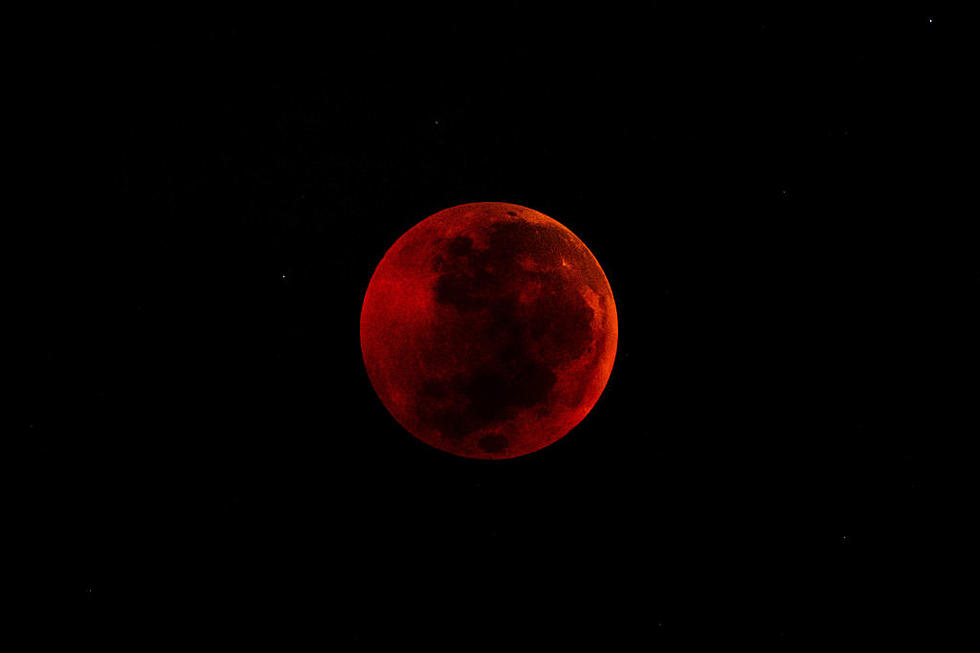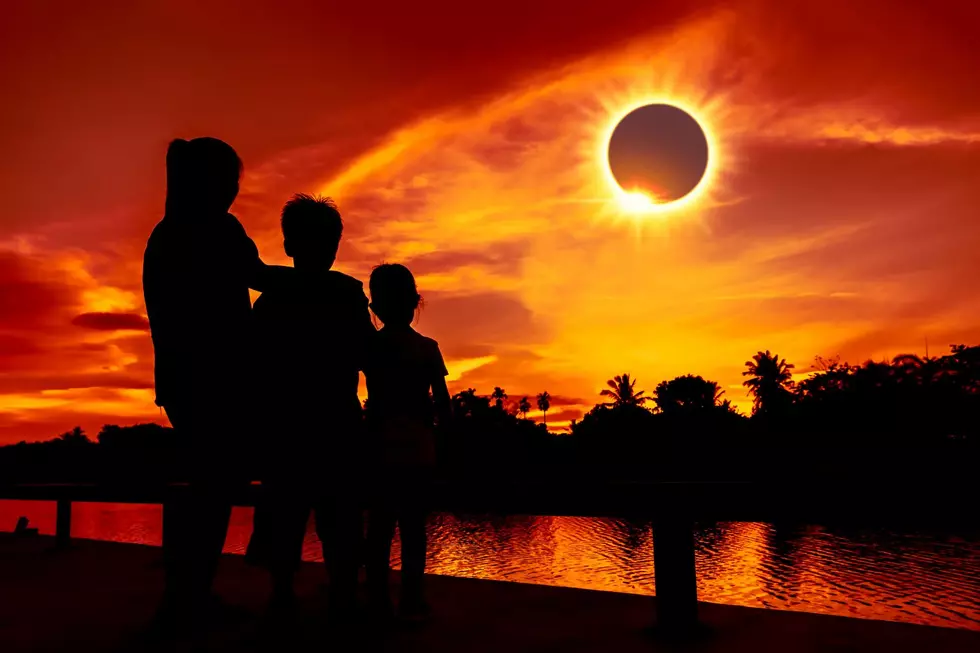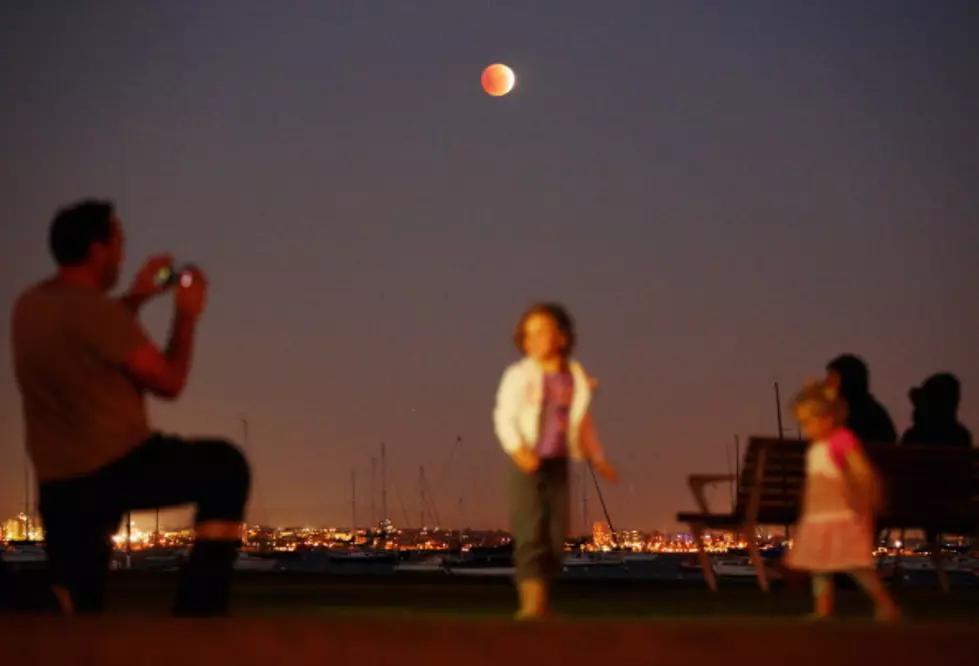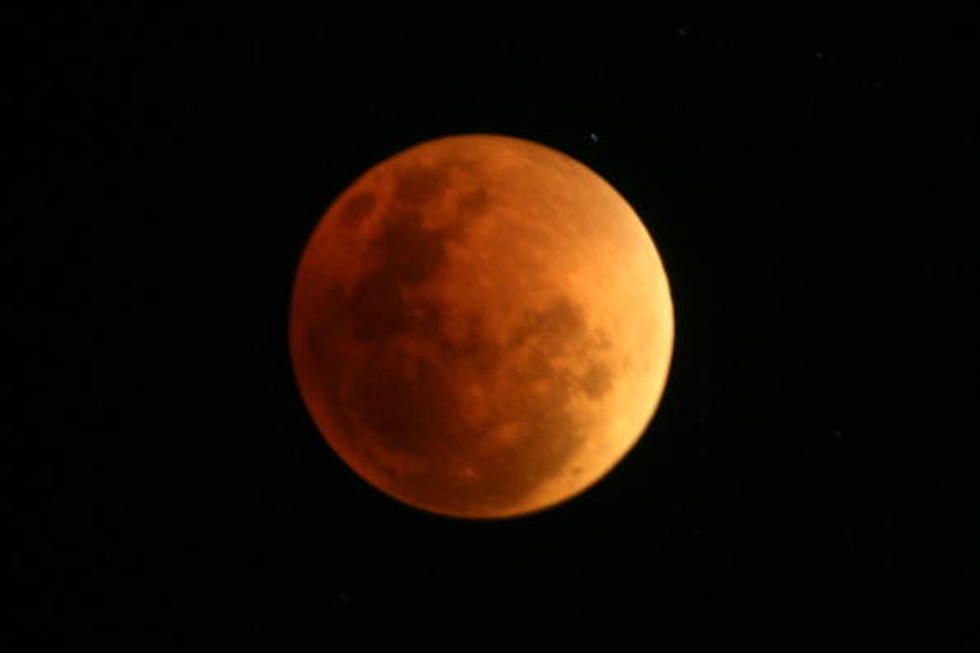
Look Up! Total Lunar Eclipse Coming to Central New York Sky in May
Look up to see a total lunar eclipse in the skies over Central New York this May.
Mark your calendar to witness the total lunar eclipse on May 15/16, 2022 when the Sun, Earth, and the moon will pass in a straight line. Anyone living in the Eastern and Central time zones will get to see the entire event.
Lunar Eclipse
Lunar eclipses occur only when the Moon is in its full phase, according to the Lowell Observatory.
At full Moon, the Sun, Earth and Moon are close to being in a straight line. But, sometimes the alignment is almost perfect and the Moon passes through the shadow of the Earth. The result of this is a darkening of the Moon, or a lunar eclipse. The deeper into the shadow the Moon moves, the greater the eclipse.
Easy to See
This is a very safe event as the full Flower moon moves into the earth’s shadow for almost three and a half hours, according to Gary Boyle, The Backyard Astronomer.
The eclipse will be easy to view too if Mother Nature cooperates, which is always iffy in Central New York. You don't need any special equipment. However, if you use binoculars or a telescope you can get a fascinating view, seeing craters, mountains, and other features moving in and out of Earth’s shadow.
Eclipse Timing (EST)
Partial umbral eclipse begins: 10:27 PM - Moon enters the earth’s shadow.
Total lunar eclipse begins: 11:29 PM - Moon turns dark orange or red.
Greatest eclipse: 12:11 AM - Mid-point of the eclipse.
Total lunar eclipse ends: 12:53 AM - Moon begins to leave the shadow.
Partial umbral eclipse ends: 1:55 AM - Moon completely exits earth’s shadow.
Next Solar Eclipse
You won't want to miss the next total solar eclipse that'll be right over parts of Central New York.
On Monday, April 8, 2024, more than 31 million people will get to see the next total solar eclipse, including millions in New York. That's more than double the 12 million that were in the path of the 2017 eclipse, according to Astronomy.com.
Dallas and Austin, Texas; Little Rock, Arkansas; Indianapolis, Indiana; Cleveland and Dayton, Ohio; Buffalo, New York; Burlington, Vermont; and Montreal, Quebec; all are situated in the path of totality.
More Impressive Eclipse
The last eclipse on August 21, 2017, won't be anywhere near as impressive or as long as the one that we'll see in 2024.
Totality will last over four minutes for part of the path across the U.S., nearly double the length of the 2017 eclipse that lasted just over two minutes.
Mother Nature may not cooperate though. April is often a very cloudy month, especially north.
The odds of it being cloudy on this day increase farther north and east based on climatology.
Plan Ahead
The next total solar eclipse may seem far away but you can start getting ready now. "The opportunity to see an eclipse without traveling internationally should not be missed," expert eclipse photographer Gordon Telepun told AccuWeather. "It’s two years before the eclipse, but it is not too early to begin making plans."
Get Your Glasses
During the last eclipse in 2017, glasses to properly view the phenomenon without hurting your eye were in short supply. Experts suggest buying eclipse glasses now and keeping them in a safe place to enjoy the celestial show when April 8, 2024, rolls around.
If you miss it, you'll have to wait until 2045 when the next total solar eclipse passes by. And who knows if the path will be this close to Central New York again.
Rare Picturesque Partial Sunrise Eclipse Over Central New York
Photographer Captures Stunning Northern Lights Show in Adirondacks
Northern Lights In Old Forge
More From WIBX 950









